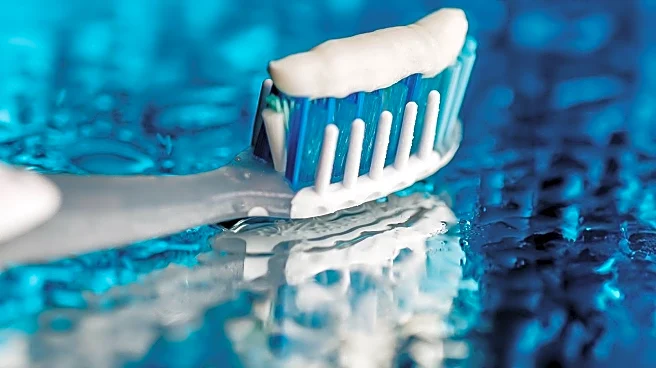What is the story about?
What's Happening?
Dentists are evaluating the potential of nano-hydroxyapatite toothpaste as an alternative to traditional fluoride toothpaste. Nano-hydroxyapatite, a synthetic calcium phosphate compound, is gaining attention for its ability to remineralize enamel and reduce tooth sensitivity. Developed by NASA in the 1970s, it has been used in oral care products in Japan since the early 1990s. Dentists highlight its benefits, including enamel remineralization, sensitivity relief, and bacterial adhesion reduction. Studies suggest that nano-hydroxyapatite can be as effective as fluoride in preventing cavities, though more research is needed to fully validate its efficacy.
Why It's Important?
The shift towards nano-hydroxyapatite toothpaste reflects growing consumer interest in fluoride-free oral care products. This trend could impact the dental industry, as patients seek alternatives due to concerns about fluoride's potential side effects, such as fluorosis. Nano-hydroxyapatite offers a biomimetic approach, mimicking natural tooth composition, which may appeal to those with aesthetic concerns or sensitivity issues. However, the American Dental Association continues to endorse fluoride for its proven cavity prevention capabilities, emphasizing the need for more comprehensive studies on nano-hydroxyapatite's long-term safety and effectiveness.
What's Next?
Further research is anticipated to establish the long-term safety and effectiveness of nano-hydroxyapatite toothpaste. Dentists may increasingly recommend it to patients seeking fluoride-free options, particularly those with mild sensitivity or aesthetic concerns. Regulatory bodies may also review its use in oral care products, considering its growing popularity. Patients are advised to consult their dentists before switching to nano-hydroxyapatite toothpaste, ensuring it aligns with their specific oral health needs.
Beyond the Headlines
The introduction of nano-hydroxyapatite toothpaste raises ethical considerations regarding consumer choice and informed consent. As more individuals opt for fluoride-free products, dental professionals must provide clear guidance on the benefits and limitations of alternatives like nano-hydroxyapatite. This development may also influence public health policies, as communities reassess the role of fluoride in water supplies and dental care.
AI Generated Content
Do you find this article useful?














